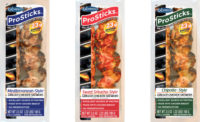Five or six years ago, when you thought of meat snacks, you probably thought of meat sticks or beef jerky. Then, other proteins started to come into play. Then those categories expanded with new flavors, greatly expanding the customer base for the category. Then came charcuterie packages and meat bars, and health-conscious consumers began to realize that meat could be a better choice than a calorie- and sugar-filled protein bar. What people used to dismiss as greasy and unappealing junk food now has a format, texture and flavor profile for any consumer.
If you think the meat snack category has reached its creative limits, think again. In the last couple of weeks alone, I have had press releases sent about pork chips and beef rinds. I was unfamiliar with biltong until a year or two ago, and now there are multiple brands raising awareness for the traditional African snack in the United States.
I don’t think we’re done yet, either. As the COVID pandemic eases (gradually – we’re not out of the woods yet!), consumers will go back to their daily activities, and that will include grabbing a protein-packed meat snack on their way out the door to the gym or the park. Office workers will look for meat snacks to give them energy to get through to quitting time. After a year of largely being stuck indoors, variety will be a big selling point – new flavors, new formats, new packaging. Who knew that pork even could be made into a chip format? But consumers are curious enough to check it out. When you’re thinking about new flavors, think beyond the United States and its known flavors. Look to Africa, India and some of the lesser-known Asian cultures to find new ingredients and spices.
If you’re in the meat snack category, then you’re in a spot where being a mad scientist isn’t necessarily a bad thing. Get creative with your product development and see where it takes you. There might be an audience waiting for whatever it is you create.
Sam Gazdziak
gazdziaks@bnpmedia.com






